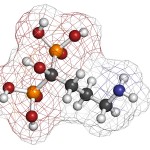
Bisphosphonate-related osteonecrosis of the jaw (BONJ) was first reported in 2003 and has since been reported in patients taking other unrelated medications. Consequently, the BONJ has been renamed as medication-related osteonecrosis of the jaw (MRONJ). MRONJ is an adverse reaction seen in some patients taking medication commonly used in the treatment of cancer and osteoporosis (e.g. bisphosphonates, denosumab and anti-angiogenic agents) that results in progressive destruction of bone in the mandible or maxilla.
The aims of this review were to a). assess the effects of interventions versus no treatment, placebo, or an active control for the prophylaxis of MRONJ in people exposed to anti-resorptive or anti-angiogenic drugs. b). effects of non-surgical or surgical interventions (either singly or in combination) versus no treatment, placebo, or an active control for the treatment of people with manifest MRONJ.
Methods
Searches were conducted in the Cochrane Oral Health’s Trials Register, the Cochrane Central Register of Controlled Trials (CENTRAL) Medline, Embase, the US National Institutes of Health Ongoing Trials Register and the World Health Organization International Clinical Trials Registry Platform without restriction on date or language.
Randomised controlled trials (RCTs) comparing one modality of intervention with another for the prevention or treatment of MRONJ were considered. The primary outcome for prevention of MRONJ was incidence of MRONJ and for treatment, healing of MRONJ. Two authors independently screened studies, extracted the data, and assessed the risk of bias. standard Cochrane analytical methods were used.
Results
- 5 RCTs involving a total of 1218 patients were included.
- 3 studies addressed prophylaxis, 2 studies considered treatment of established MRONJ
- Prophylaxis of MRONJ
- One trial conducted in 253 men with metastatic prostate cancer treated with zoledronic acid compared standard care with regular dental examinations in 3-month intervals and preventive treatments (inc. antibiotics before dental extractions and use of wound closure techniques that avoid exposure and contamination of bone) The intervention seemed to lower the risk of MRONJ: RR= 0.10; (95%CI, 0.02 to 0.39)
- One trial investigated the effect of plasma rich in growth factors (PRGF) for preventing MRONJ in people with cancer undergoing dental extractions. There was insufficient evidence to support or refute a benefit of PRGF on MRONJ incidence when compared with standard treatment (RR 0.08, 95% CI 0.00 to 1.51; 176 participants; very low-quality evidence).
- another trial compared wound closure by primary intention with wound closure by secondary intention after dental extractions in people treated with oral bisphosphonates (700 participants), no cases of intra-operative complications or postoperative MRONJ were observed.
- Treatment of MRONJ
- One trial analysed hyperbaric oxygen (HBO) treatment used in addition to standard care (antiseptic rinses, antibiotics, and surgery) compared with standard care alone. No significant improvement in healing compared to standard care was seen RR= 1.56; (95%CI, 0.77 to 3.18) [very low-quality evidence].
- No significant difference was found in a second RCT comparing autofluorescence- and tetracycline fluorescence-guided sequestrectomy for the surgical treatment of MRONJ at any time point [at one-year follow-up: RR=1.05;(95%CI, 0.86 to 1.30)]
Conclusions
The authors concluded: –
Prophylaxis of MRONJ
One open-label RCT provided some evidence that dental examinations in three-month intervals and preventive treatments may be more effective than standard care for reducing the incidence of MRONJ in individuals taking intravenous bisphosphonates for advanced cancer. We assessed the certainty of the evidence to be low.
There is insufficient evidence to either claim or refute a benefit of either of the interventions tested for prophylaxis of MRONJ (i.e. PRGF inserted into the post-extraction alveolus during dental extractions, and wound closure by primary or secondary intention after dental extractions).
Treatment of MRONJ
Available evidence is insufficient to either claim or refute a benefit for hyperbaric oxygen therapy as an adjunct to conventional therapy. There is also insufficient evidence to draw conclusions about autofluorescence-guided versus tetracycline fluorescence-guided bone surgery.
Comments
MRONJ has only recently emerged as a clinical problem. It is thought to occur in around 5 in 100 patients taking high dosages the implicated medications for cancer-related conditions and less commonly in those receiving the medication for osteoporosis. Given that it is still relatively uncommon it is perhaps not surprising that limited evidence is available on how to prevent and treat MRONJ. However, with an increasingly aging population the population at risk is increasing highlighting the need to develop preventive strategies. Consequently there is a need for well designed RCTs to help identify preventive strategies in people at risk undergoing dento-alveolar surgery as well as RCTs to assess different treatment strategies.
Links
Primary paper
Beth-Tasdogan NH, Mayer B, Hussein H, Zolk O. Interventions for managing medication-related osteonecrosis of the jaw. Cochrane Database of Systematic Reviews 2017, Issue 10. Art. No.: CD012432.DOI: 10.1002/14651858.CD012432.pub2.
Other references
Cochrane Oral Health Group Blog- Treating and preventing medication-related osteonecrosis of the jaw
